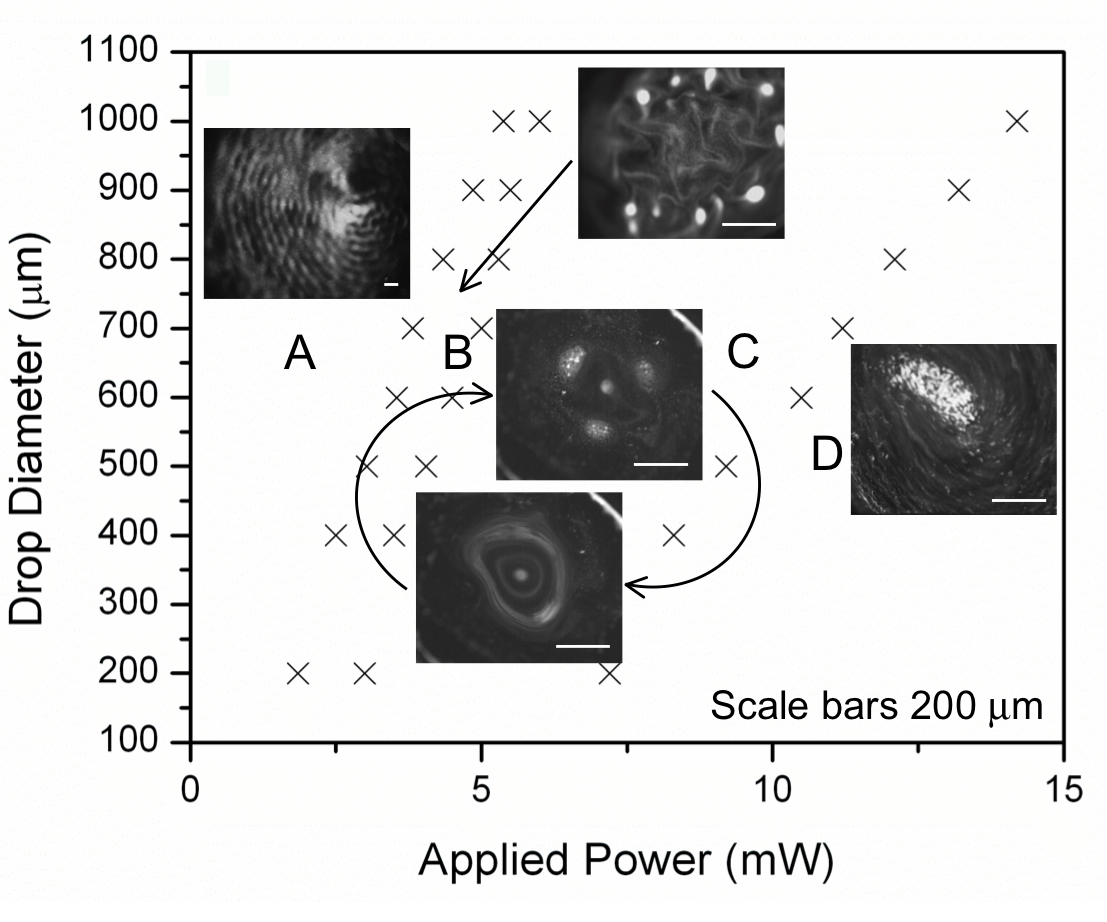467c Vibration-Induced Microfluidic Colloidal Island Self-Assembly and Erasure
Microfluidics offers the potential for facilitating the self-assembly of sub-micron colloidal particles for the patterning of nanostructured materials or for cell sorting. Here, we demonstrate the peculiar phenomenon of rich and complex interfacial pattern formation arising from the nonlinear dynamics associated with the standing wave vibrations induced on the free surface of a drop containing a suspension of 500 nm colloidal particles by 20 MHz surface acoustic waves that propagate on the piezoelectric substrate on which the drop is placed. At low input powers, the colloidal particles assemble into linear concentric rings that resemble fingerprint-like patterns (Regime A in figure) through a particle drift mechanism that arises as a consequence of the capillary force acting on the particles in concert with the interfacial acceleration of the low amplitude 20 MHz standing wave vibrations induced at the free surface of the drop by the 20 MHz surface acoustic wave travelling beneath it. Upon increasing the input power, the colloidal particles in the linear ring-like assemblies then cluster to form point-wise colloidal islands (Regime B in figure). These islands appear to form at the intersection between the nodal lines of the 20 MHz standing wave vibration at the interface with the circular nodal ring of a 1 kHz order vibration associated with the capillary-viscous resonance of the drop. The number and position of the colloidal island assemblies is seen to be dependent on the drop size. If the input power is kept constant and the drop is allowed to evaporate, the number of islands can be observed to decrease successively. Further increases in the input power leads to the onset of significant fluid streaming within the drop (Regime C in figure). When streaming commences, the particles are dispersed and hence the colloidal island assemblies are destroyed. However, after a short transient, the streaming ceases and the colloidal islands are observed to reform until the streaming recommences and erases them again. This cyclic phenomenon occurs aperiodically and the direction of the streaming (clockwise/anticlockwise) is noted to be reasonably random, suggesting that this regime is a transient metastable state and that the commencement and cessation of the streaming is triggered by a peculiar instability arising from the highly nonlinear coupling between the acoustic, hydrodynamic and capillary forces. As the input power is increased (Regime D in figure), however, the streaming becomes stronger and more consistent, leading to permanent dispersion of the particles. Once this occurs, the interfacial colloidal patterns are no longer evident.
